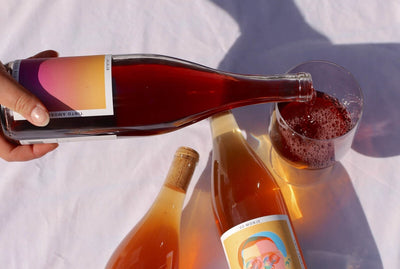Wine has been an integral part of human civilization for centuries, with its origins tracing back to ancient times. Among the myriad types of wine available, Tinto stands out as a unique and storied variety with a rich history that spans centuries. From its inception as an elixir in ancient civilizations to its modern-day incarnation as a popular real wine choice, Tinto has evolved and adapted, yet still retains its distinct characteristics and allure. Let's delve into the fascinating journey of Tinto wine and explore its historical significance and contemporary appeal. If you want to know more about tinto real wine, you can explore this link.
The Ancient Origins of Tinto
Centuries ago, in the cradle of civilization, the production of wine was a revered art form. Tinto, with its deep crimson hue and bold flavor profile, emerged as a favorite among ancient wine enthusiasts. Here are some key points regarding the ancient origins of Tinto:
- Tinto traces its roots back to ancient civilizations such as the Greeks and Romans, who valued the rich, full-bodied taste of this wine.
- It was believed that Tinto wine possessed mystical properties and was often used in religious ceremonies and rituals.
- The production of Tinto involved meticulous techniques and processes that were passed down from generation to generation.
- Archaeological discoveries have unearthed ancient amphorae and vessels used to store and transport Tinto wine, providing insights into its significance in ancient societies.
The Renaissance of Tinto
After a period of decline during the Middle Ages, the Renaissance heralded a revival in the production and popularity of Tinto wine. The following are key aspects of the Renaissance of Tinto:
- With the rediscovery of classical knowledge and arts, Tinto wine experienced a resurgence in Europe during the Renaissance period.
- Artists, writers, and nobility championed Tinto wine, elevating its status as a symbol of refinement and sophistication.
- New techniques in viticulture and winemaking were developed during this period, leading to improvements in the quality and flavor profile of Tinto wine.
- Tinto wine became a staple at royal courts and noble gatherings, cementing its reputation as a beverage fit for the elite.
The Evolution of Tinto: From Elixir to Real Wine
As the world entered the modern era, Tinto underwent a transformation from an elixir with mystical connotations to a real, tangible wine enjoyed by people from all walks of life. Here are the significant milestones in the evolution of Tinto:
Industrial Revolution and Mass Production
- The Industrial Revolution brought about advancements in winemaking technology, leading to mass production of Tinto wine.
- Improved transportation networks allowed Tinto wine to be distributed on a larger scale, reaching new markets and consumers.
- The democratization of wine consumption enabled a broader audience to savor the unique flavors of Tinto.
Modern Trends and Innovations
- In the contemporary wine landscape, Tinto has continued to evolve, adapting to changing consumer preferences and trends.
- Winemakers have experimented with different grape varietals and aging techniques to create diverse expressions of Tinto wine.
- Sustainable practices and organic viticulture have gained prominence in the production of Tinto, aligning with the growing emphasis on environmental responsibility.
- Tinto wine has found a place in the global market, appealing to a diverse audience of wine enthusiasts seeking authentic and high-quality beverages.
The Contemporary Appeal of Tinto Wine
Today, Tinto wine continues to captivate wine lovers with its rich history, complex flavors, and cultural significance. Its contemporary appeal lies in its ability to bridge the gap between tradition and innovation, offering a sensory experience that resonates with a modern audience. Here are key factors contributing to the contemporary appeal of Tinto:
Diverse Flavor Profiles
- Tinto wine exhibits a wide range of flavor profiles, from fruit-forward and spicy to earthy and velvety, appealing to a variety of palates.
- Each bottle of Tinto tells a unique story of terroir, craftsmanship, and grape variety, offering a sensorial journey for wine enthusiasts.
Food Pairing Versatility
- Due to its versatility, Tinto wine pairs well with a diverse array of dishes, from hearty meats and cheeses to vegetarian fare and seafood.
- Its robust tannins and acidity make it an ideal companion for rich and flavorful foods, enhancing the dining experience.
Cultural Significance
- Tinto wine holds cultural significance in regions where it is produced, serving as a symbol of heritage, tradition, and community.
- Wine festivals, tastings, and vineyard tours offer opportunities for wine lovers to immerse themselves in the rich cultural tapestry surrounding Tinto.

